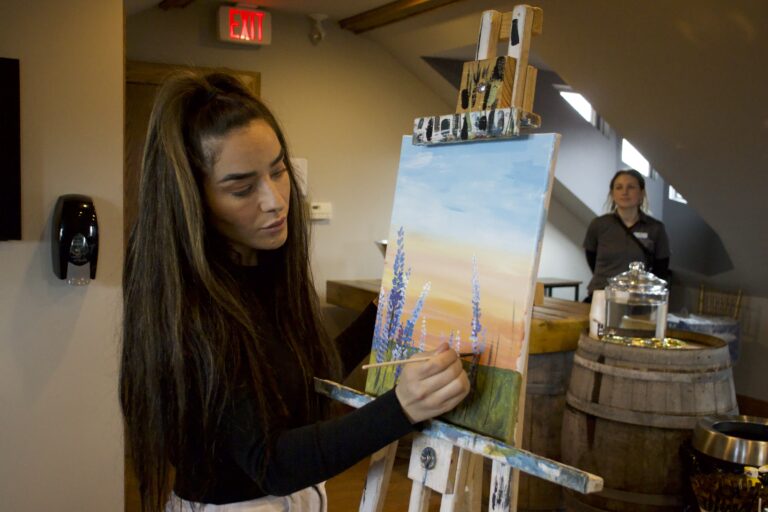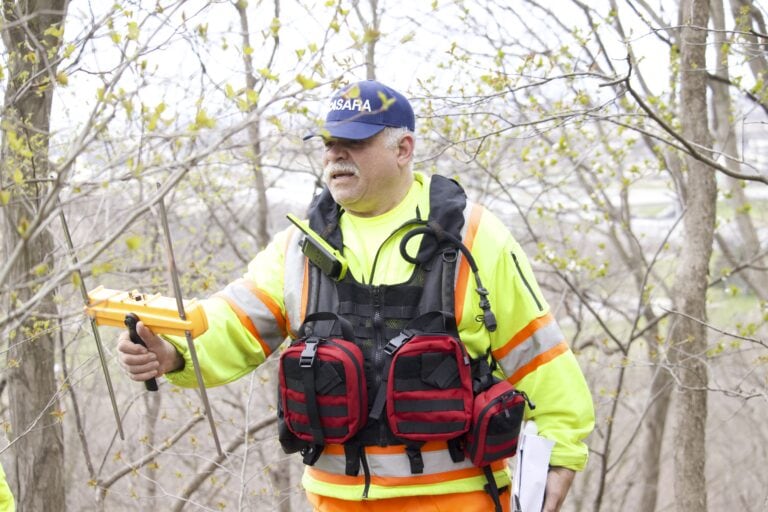The messaging was very clear during a town-sponsored coyote information session on Wednesday night: the animals terrorizing residents of Old Town have been eating food from human sources and until those sources are addressed the problem will continue.
Representatives of the Lincoln County Humane Society, the Ontario natural resources ministry and Coyote Watch Canada all reiterated the importance of removing all outdoor food sources from residential neighbourhoods as the number one deterrent against brazen behaviour.
And Niagara-on-the-Lakers need to rally together and make it happen through teamwork, said Coyote Watch executive director Lesley Sampson.
Even people who innocently feed birds or squirrels on their properties are contributing to the problem.
“We all love to see the wildlife but if you are feeding one, you are feeding them all,” Sampson said during the session livestreamed on the Town of NOTL's website.
Food sources for coyotes can be broken down into two categories – direct and indirect.
Direct food sources are when a human puts out food specifically to feed coyotes. Sampson said this has been a problem before and ensuring it does not happen is essential to solving the issue in Old Town.
Indirect feeding can be things like bird feeders, outdoor cat bowls, garbage left outside and any other manner of accessible food source a coyote can get at even though it is not intended for them.
Coyotes can be generalist eaters, which means they consume a wide variety of food for their diet, from bird seed and fruit to small animals, Sampson said.
The danger of having a coyote able to access human food is that it causes food conditioning.
“We’re creating animals that essentially beg for food and then there’s risk of injury to humans and our pets as well,” Sampson said.
This is known as demand behaviour and results in a coyote seeing a residential neighbourhood as its territory to get food, she said. It also considers all dogs in the area to be rivals for its food source and they will potentially attack them, she said.
The same situation occurred in 2019 in Garrison Village and Sampson said there was a robust team effort from the community to remove attractants from the neighbourhood – and the problem went away overnight.
Residents need to police each other and ensure that food sources are removed because even if the coyote that is causing problems is killed, the food sources will simply attract more coyotes to take its place, she said.
Sampson urged any resident who sees food getting left outside to report it to the town.
“It doesn’t mean that you’re trying to tell on your neighbour but we really do need to work together to remove these food sources,” she said.
“The coyote (in Old Town) is exhibiting behaviour that is a direct indication to accessing anthropogenic foods,” Sampson said.
David Denyes from the ministry agreed, saying when coyotes become this bold near humans it is nearly always because of access to food.
Kevin Strooband, executive director of the Lincoln County Humane Services, pointed out two food sources that many residents may not consider.
Any compost bin left in a backyard needs to be properly secured. If not, the compost will attract rats and other small mammals, which in turn will attract coyotes, he said.
The same thing goes for brush piles, which can become good places for rabbits to hide. Rabbits are prey for coyotes and will attract them to the neighbourhood.
Sampson also asked residents not to throw brush over their fences, as this creates a pile, which makes it easier for wild animals to get into their yards.
The next step after eliminating food resources for coyotes is teaching the animal it is crossing a dangerous boundary by coming into the neighbourhood.
This is called aversion conditioning and includes using a strong and firm voice and standing up to the animal to teach them they are not welcome, she said. She stressed that screaming does not work as it is a confusing sound for a coyote to hear.
Yelling at a coyote from far away or from a car also is not effective, said Sampson.
She said whistles and horns can be helpful, but many coyotes have grown accustomed to similar sounds due to sirens from emergency vehicles or the noises from sports parks.
Residents also can throw projectiles in the direction of the animal but not directly at it. Individuals should never turn their back and run from a coyote because that initiates their prey drive and they will give chase.
Popping an umbrella open and closed, and filling a garbage bag with air and popping it are also effective.
“We set the boundaries for these animals. They do not set them for us,” Sampson said.
“Up until now, the messaging has not been clear to them and they’ve had a good — he or she – has had a good month-and-a-half to develop these inappropriate behaviours.”
Coyotes are not considered vectors for rabies, she added.
Sampson addressed concerns that the coyote is fearless, saying there have been several accounts of the coyote running away from people, which is positive.
She referred to a recent video posted on Facebook that showed Tim Balasiuk chasing a coyote away from a woman and her dog, a clear demonstration that the coyote is still scared of people and aversion conditioning will work on it.
“It’s not that they’re not really afraid of us, their proximity tolerance has increased and they are more willing to take risks to get those (food) rewards,” she said.
Trapping and relocating a coyote is pointless as they cannot legally be moved more than one kilometre from where they are captured. As Strooband put it, the coyote can get back to where it was picked up before you do.
While it is not an effective long-term solution, as populations bounce back and transient coyotes take their place, Sampson and the ministry said it is within an individual's rights to trap and kill a coyote to protect their property.
“Lethal removal of this coyote is not going to solve the inherent issues,” especially food sources in the community, Sampson said.
In order for residents to resume walking in their neighbourhood Sampson recommended people walk in groups to feel comfortable, bring an umbrella along and report any sightings to the town.
Sampson said she and the town are planning an in-person workshop to demonstrate proper aversion conditioning tactics for residents and will announce the date and location soon.











